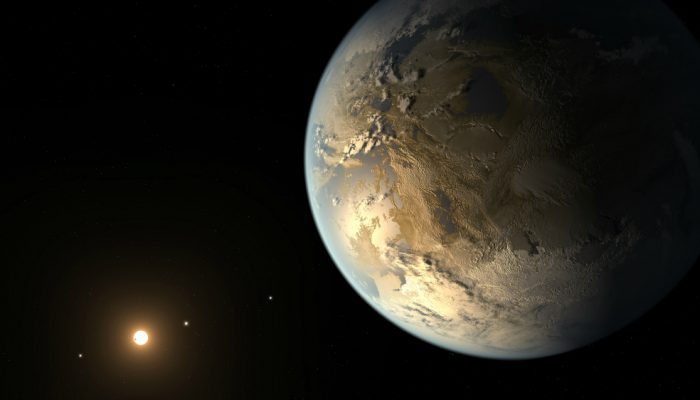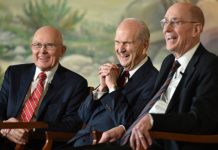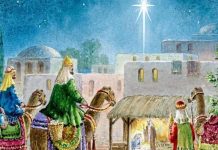
Astronomers have found another planet in the Milky Way galaxy with characteristics consistent with those that scientists have determined make it possible to sustain life, and it’s the most Earth-like yet.
Aside from the heavy implications about life outside Earth’s solar system, the discovery also lends more physical evidence to parts of the long-established cosmological faith of The Church of Jesus Christ of Latter-day Saints.
The new planet, dubbed “Kepler 186-f,” is the first of many Earth-like planets found so far that is “almost certainly rocky,” according to an article on PBS.org, and maintains the ideal distance from its home star to allow water to exist in liquid form.
According to the team of scientists that announced the finding during a NASA teleconference April 18, the Kepler space telescope spotted Kepler 186-f as it monitored nearby stars between 2009 and 2013.
Sometimes referred to as “planet hunters,” astronomers search for planets orbiting stars outside the solar system using methods that are surprisingly simple in their genius. Since planets are far too small and dark to be detected by telescopes on Earth, the researchers watch the luminous star they orbit instead, searching for a “wobble,” the minimal—but detectable—effect of a circling planet’s gravitational pull.
In the Pearl of Great Price, the ancient prophets Moses, Enoch and Abraham each relate an account in which they “talked with the Lord, face to face, as one man talketh with another; and he told [them] of the works which his hands had made.” (Abraham 3:11)
The inspired translation of the Book of Moses by the Prophet Joseph Smith records that “[Moses] beheld many lands; and each land was called earth, and there were inhabitants on the face thereof” (Moses 1:29). The Lord then said to Moses, “Worlds without number have I created, and for my own purpose have I created them” (Moses 1: 33).
Later in the same record, the prophet Enoch’s personal account is found. “Were it possible to number the particles of the earth,” Enoch wrote, speaking directly to God, “yea, millions of earths like this, it would not be a beginning to the number of Thy creations.”
According to the Extrasolar Planets Encyclopedia, 1783 planets have been detected orbiting stars outside the solar system. Of those, 350 are approximately the size of the Earth.
A study by astronomers at the Universities of California-Berkeley and Hawaii on the Kepler telescope data, which represents only a small part of the Milky Way, found that the existence of tens of billions of Earth-size, possibly habitable planets in our own galaxy is not only plausible but very likely.
And that’s just one galaxy, in a universe of countless millions.
It isn’t hard to understand, given the evidence, why men like Moses “greatly marveled and wondered” (Moses 1:8) at the astronomical expanse of the numberless creations of their God.





